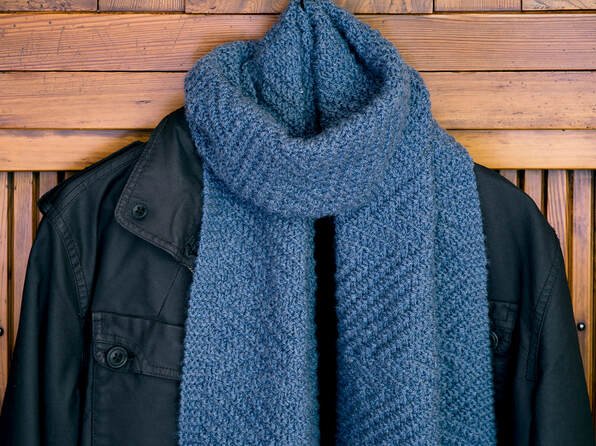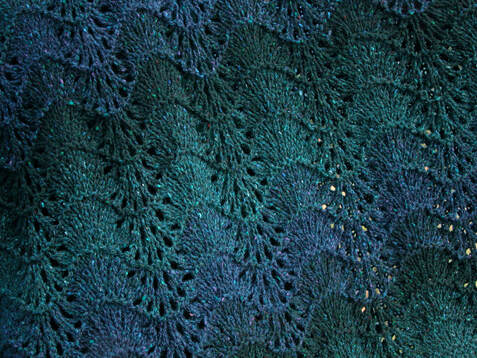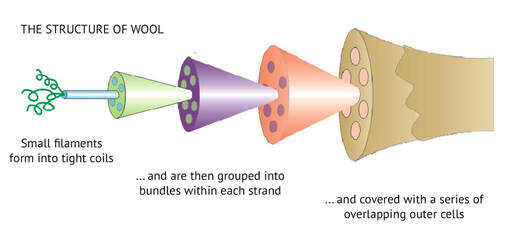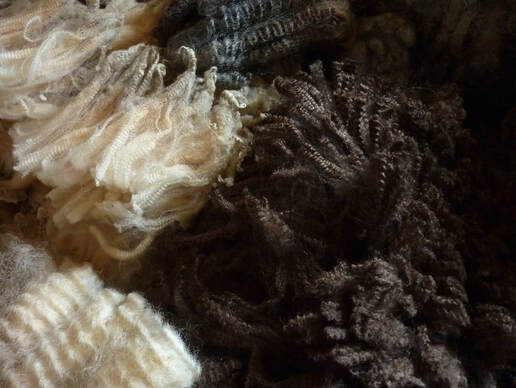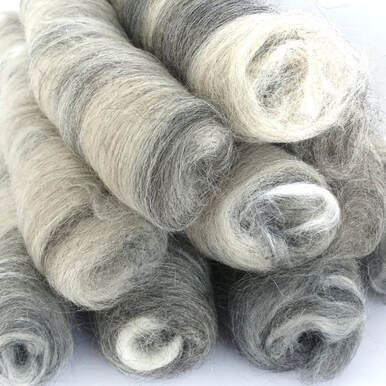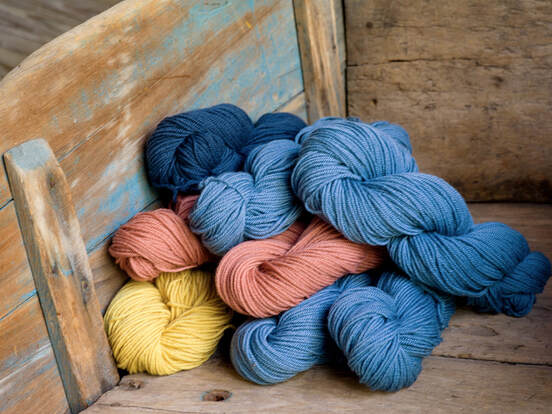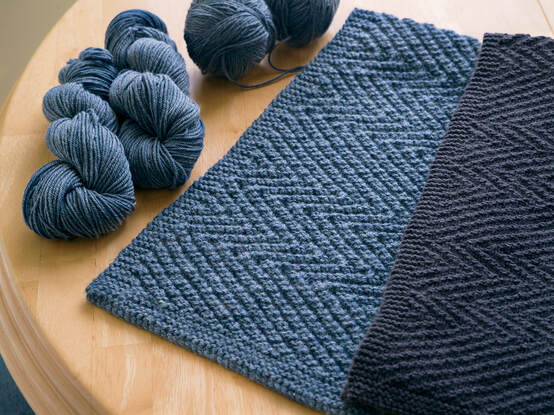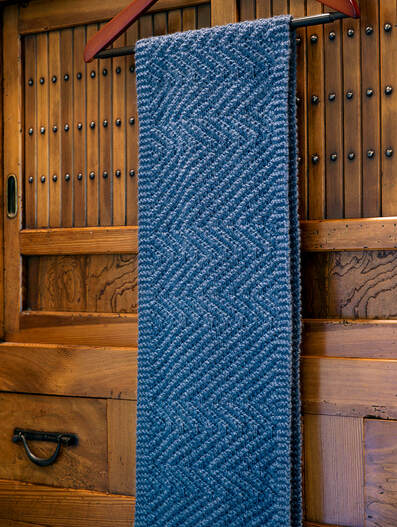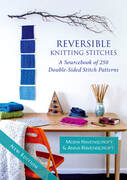I made a discovery a few years ago. I needed to knit a shawl for an evening event on Ellis Island, which is a small island in New York harbour. I had made an outfit in readiness but I knew the strappy top would not keep me warm in a New York winter.
I went hunting for some suitable wool but couldn’t find anything in the weight I wanted, so I looked at thinner yarns that I could double up. I had often done this in the past. In fact when I was younger that was a frequent occurrence as my local yarn store only really carried light-weight wool yarns, mostly for socks and skimpy cardigans.
However, as soon as I started to knit the shawl I noticed that it was gloriously warm to work. As it grew, I could feel the warmth on my lap, and when I tried it around my shoulders I felt instantly warmer. It was like magic.
I went hunting for some suitable wool but couldn’t find anything in the weight I wanted, so I looked at thinner yarns that I could double up. I had often done this in the past. In fact when I was younger that was a frequent occurrence as my local yarn store only really carried light-weight wool yarns, mostly for socks and skimpy cardigans.
However, as soon as I started to knit the shawl I noticed that it was gloriously warm to work. As it grew, I could feel the warmth on my lap, and when I tried it around my shoulders I felt instantly warmer. It was like magic.
And when I thought about it, it seemed obvious: the doubling up of the yarn had added to the air being trapped within the yarn structure so that I was essentially wearing a knitted version of a duvet! The yarn itself had been spun to trap the air, but then I had added extra air pockets by working two strands together.
So in this second blogpost in my new "Seeing Double" series, I would like to explore how we can use doubled-up yarns to add warmth to the finished item. If you would like to read the introductory blogpost to the series, please click here.
The Structure of Wool:
So in this second blogpost in my new "Seeing Double" series, I would like to explore how we can use doubled-up yarns to add warmth to the finished item. If you would like to read the introductory blogpost to the series, please click here.
The Structure of Wool:
Let me back-track and talk about wool and why it is warm in the first place. Wool has a wonderful structure which gives warmth and elasticity to the fibre. Each strand has a mass of tiny, springy filaments inside and these are bundled together and enclosed within an outer layer.
This outer layer has overlapping scales on the outside which gently hold the strands apart producing tiny cellular air pockets deep within the fibre.
This outer layer has overlapping scales on the outside which gently hold the strands apart producing tiny cellular air pockets deep within the fibre.
Then on top of that, the bundles or “locks” of fibres are often wavy or crimped and this adds further warmth and insulation. Indeed the warmest wools are those which have small, highly-crimped fibres as they will trap the air to a greater degree. This effect can then be enhanced by spinning.
Woollen vs Worsted Spinning:
Woollen vs Worsted Spinning:
Wool can be spun using either a woollen technique or in a worsted fashion. In woollen spinning, coils or “rolags” of loosely-carded fibres are gently elongated so that they retain a core of air within the structure. These singles are then plied together to give a warm, springy yarn.
In worsted spinning, the fibres are combed so they are better aligned and then spun to retain this smoothness. Worsted-spun yarns tend to be a little stronger with excellent draping characteristics and lustre but are typically a little denser and cooler.
You can usually tell the difference between these two methods of spinning when you look at a ball of yarn, as woollen-spun yarns have a matte appearance and feel lightweight, squishy and warm. If you're buying on-line then the website might tell you which method of spinning has been used.
However, you can also tell by looking at the description which might include words such as "light", "airy", "warm" or "springy", or they might speak about the yarn "blooming" after washing. You can see an example of a yarn blooming when washed in my blogpost here.
Using doubled yarns for extra warmth:
In worsted spinning, the fibres are combed so they are better aligned and then spun to retain this smoothness. Worsted-spun yarns tend to be a little stronger with excellent draping characteristics and lustre but are typically a little denser and cooler.
You can usually tell the difference between these two methods of spinning when you look at a ball of yarn, as woollen-spun yarns have a matte appearance and feel lightweight, squishy and warm. If you're buying on-line then the website might tell you which method of spinning has been used.
However, you can also tell by looking at the description which might include words such as "light", "airy", "warm" or "springy", or they might speak about the yarn "blooming" after washing. You can see an example of a yarn blooming when washed in my blogpost here.
Using doubled yarns for extra warmth:
As a result of the above processes, you will see that a woollen-spun yarn using fine, crimpy wool will give you a warm, insulating starting material. Now if you double those yarns up so that every stitch has two separate strands being worked at the same time then that will add some extra opportunities for air to be trapped deep within the knit structure. Hence the warmth in my magic shawl!
Recently I had a couple of requests from people asking me for a winter-weight version of the Lamberhurst Scarf pattern and my mind immediately turned to a yarn I had sampled for the first time last year. This is Quince & Co “Chickadee” which is a soft, warm, squishy sportweight yarn and you can read more about this yarn in an earlier blogpost here.
Recently I had a couple of requests from people asking me for a winter-weight version of the Lamberhurst Scarf pattern and my mind immediately turned to a yarn I had sampled for the first time last year. This is Quince & Co “Chickadee” which is a soft, warm, squishy sportweight yarn and you can read more about this yarn in an earlier blogpost here.
They also do a companion range called “Chickadee Organic Heathers” and if anything I was even more impressed with this when I ordered some a couple of months ago. The colours are gorgeous and the feel of the yarn makes it one of my current favourites to work with – and no, I don't get any commission from them! I just like the yarn.
I selected a lovely denim blue colour called “Kyanite” and saw that the recommended gauge on the ball band was 26 sts:10cm/4 ins. This is a typical gauge for Sportweight yarns which are usually in the 24-26 sts:10cm/4 ins range.
I selected a lovely denim blue colour called “Kyanite” and saw that the recommended gauge on the ball band was 26 sts:10cm/4 ins. This is a typical gauge for Sportweight yarns which are usually in the 24-26 sts:10cm/4 ins range.
I wanted to use the yarn doubled up and found that gave a very nice weight for a winter-weight scarf. The gauge was then 18sts:10cm/4 ins in the Chevron stitch pattern I used for the scarf. This is approximately the same as if I had used a Worsted Weight yarn but so, so much squishier and warmer! I was really pleased with how this turned out and can see this scarf getting a lot of use for walks in the snow.
So if you have been thinking about knitting something for the deep winter, then consider using two thinner yarns worked together to add warmth to the finished article.
Next Time . . .
I will come back to yarn weights next time and show how they can be a starting point to expanding your range of yarn options when you are thinking about your next project.
In the meantime, if you would like to read more about the Lamberhurst Scarf pattern, then please click here. The reversible Chevron Stitch pattern used for this scarf was taken from our book "Reversible Knitting Stitches”, and you can find more information about that here.
Until next time – keep safe and keep smiling,
Moira
So if you have been thinking about knitting something for the deep winter, then consider using two thinner yarns worked together to add warmth to the finished article.
Next Time . . .
I will come back to yarn weights next time and show how they can be a starting point to expanding your range of yarn options when you are thinking about your next project.
In the meantime, if you would like to read more about the Lamberhurst Scarf pattern, then please click here. The reversible Chevron Stitch pattern used for this scarf was taken from our book "Reversible Knitting Stitches”, and you can find more information about that here.
Until next time – keep safe and keep smiling,
Moira
Last Blogpost: Seeing Double #1 – A new blogpost series on knitting with two ends of yarn Next Up: Seeing Double #3 – It's good to have options Our book: Reversible Knitting Stitches My Website: www.wyndlestrawdesigns.com |
Photo credits:
The Structure of Wool diagram was adapted from "The Hierarchy of Wool", www.sciencedirect.com
Photo of wool samples was taken from www.spinningshepherd.com
Photo of rolags from www.albaranch.net
All other photos by Moira Ravenscroft or Tim Ravenscroft
The Structure of Wool diagram was adapted from "The Hierarchy of Wool", www.sciencedirect.com
Photo of wool samples was taken from www.spinningshepherd.com
Photo of rolags from www.albaranch.net
All other photos by Moira Ravenscroft or Tim Ravenscroft
Keywords: Tutorials/Doubled Yarns, Patterns/Mens Patterns
two ends of yarn held together, scarf, scarves, wool, warmth, insulation, woollen spinning, worsted spinning,
two ends of yarn held together, scarf, scarves, wool, warmth, insulation, woollen spinning, worsted spinning,
